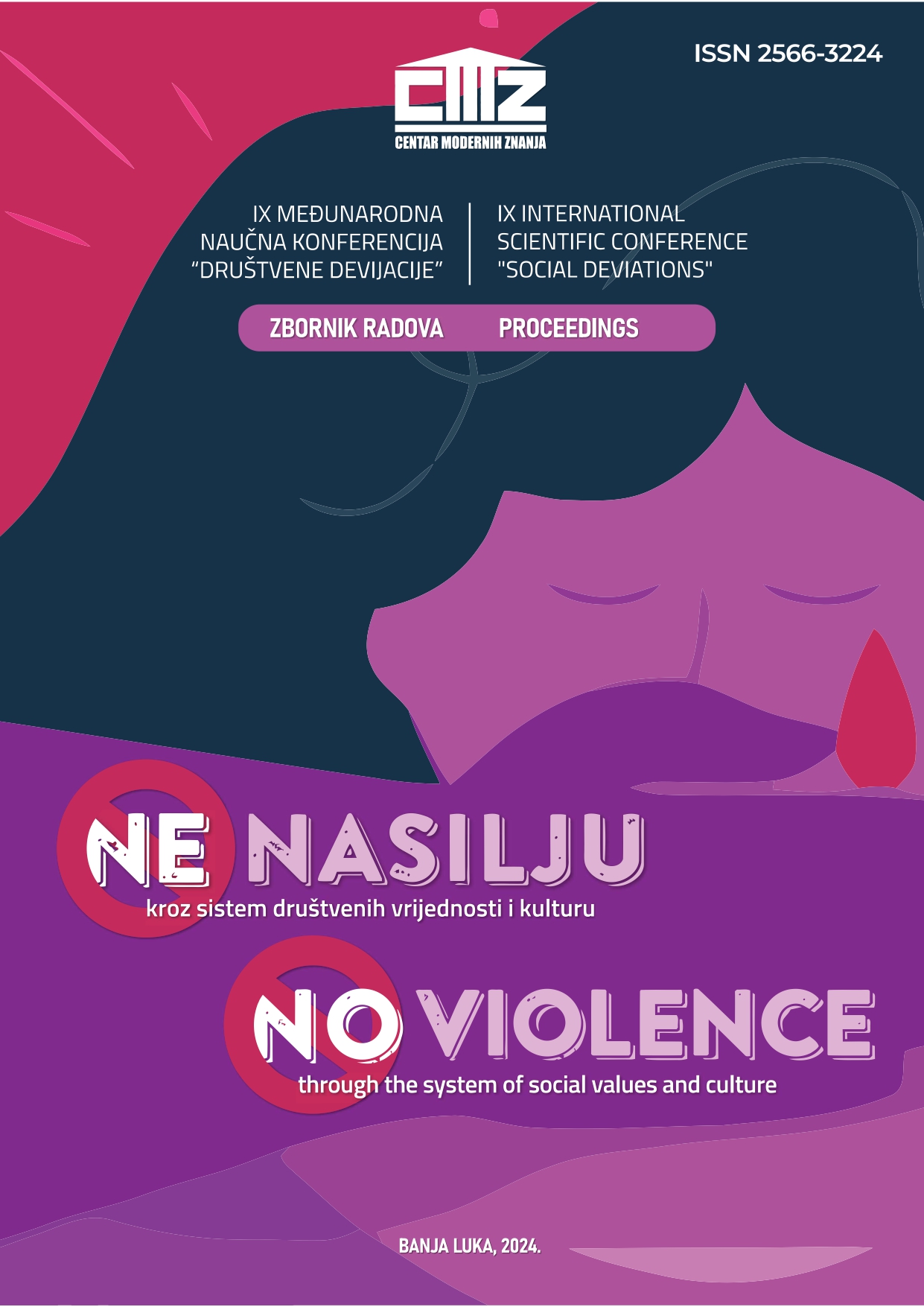POVEZANOST KOOPERATIVNOSTI SA NASILNIM PONAŠANJEM I UPRAVLJANJEM KONFLIKTIMA KOD UČENIKA
THE CONNECTION BETWEEN COOPERATIVENESS, VIOLENT BEHAVIOUR, AND CONFLICT MANAGEMENT AMONG STUDENTS
Author(s): Nermin Mulaosmanović, Anel RamićSubject(s): Social Sciences, Education, Psychology, Sociology, Studies in violence and power, Sociology of the arts, business, education, Social Norms / Social Control, Pedagogy
Published by: CENTAR MODERNIH ZNANJA
Keywords: cooperativeness; conflict management; nonviolent behavior; students;
Summary/Abstract: Various disputes may arise during the educational process, affecting teaching, activities, and the overall well-being of youth. The competitive society in which children grow up does not provide sufficient opportunities to practice and build collaboration. Cooperative or collaboration exercises allow youngsters to work together to accomplish a goal. It is believed that it is never too early to promote collaboration and conflict resolution abilities in students, as conflict resolution methods are an indicator of an individual's social competency. Adopted forms of conduct, particularly within them, are required for the individual's personal involvement in community activities and contact with other members. As can be seen, cooperative activity is vital for social elements of conduct, because being prepared for work activities with others benefits everyone. When discussing cooperation and conflict resolution, it is important to note that productive conflict resolution processes are akin to cooperative procedures, whilst destructive processes are similar to competitive processes. Given the foregoing, the goal of this paper was to determine whether student cooperativeness or cooperation in school is a significant predictor of successful conflict management and nonviolent behavior, whereas the main problem of the work is to investigate the relationship between cooperativeness, conflict management, and violent behavior. The study included students in the first, second, third, and fourth grades of Tuzla Canton high schools. This study involved 823 students. The subjects participated in the study ranged in age from 16 to 19 years. There are 403 male respondents and 420 female respondents, resulting in a percentage ratio of 48.96%:51.04%. The findings indicate that cooperativeness is a strong predictor of conflict management styles. Cooperativeness is associated with lower levels of violent conduct. There was a considerable variation in cooperativeness across genders. The aforementioned results that it is critical to encourage collaboration in the educational process since it aids in the achievement of goals, fosters the skills required for social behavior, which is necessary for nonviolent conflict resolution, and promotes nonviolent behavior among students in school.
Journal: DRUŠTVENE DEVIJACIJE
- Issue Year: IX/2024
- Issue No: 9
- Page Range: 237-246
- Page Count: 10
- Language: Bosnian, Croatian, Serbian

